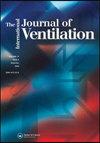加拿大北极地区先进热回收通风系统的性能
IF 1.5
4区 工程技术
Q3 CONSTRUCTION & BUILDING TECHNOLOGY
引用次数: 4
摘要
在加拿大努纳武特的伊克卢特,建造了一座示范住宅。总体努力的目的是开发和整合技术,并评估位于加拿大北极地区的高性能建筑的性能,同时考虑到其偏远位置所带来的独特的社会、经济和后勤挑战。之前的工作包括监测和报告2016年4月至2017年4月期间的供暖能源使用情况。下一阶段研究的目的是在伊克卢特极冷的气候中提供原型需求控制住宅通风系统的实验数据,那里的年平均室外温度约为- 9°C。本文概述了2017年4月至2019年4月期间基于二氧化碳的需求控制热回收通风系统的开发、实施和监测情况。该系统配备了两个电预热器,以确保热回收通风机(HRV)不会结霜,并可根据需要保持足够的通风。在HRV后装有一个电加热器来控制供气温度。在2018年12月至2019年2月期间,测量了系统最低通风量15.5 L/s时HRV、预热器和送风加热器的用电量。还监测了通风系统的相关温度,以便评估系统的性能。比较了HRV和整个系统的合理回收效率。实验表明,HRV和系统的平均SRE分别为72%和35%。两个月通风系统的总能耗为390千瓦时,换算成6.30千瓦时/天,能源使用强度为0.27千瓦时/m2/天,或12.25 Wh/m3的室外空气供应。本文章由计算机程序翻译,如有差异,请以英文原文为准。
Performance of an advanced heat recovery ventilation system in the Canadian Arctic
Abstract A demonstration house was previously built and commissioned in Iqaluit, Nunavut, Canada. The purpose of the overall effort is to develop and integrate technologies and evaluate the performance of a high-performance building located in the Canadian Arctic, while considering the unique social, economic, and logistical challenges associated with its remote location. Previous work consisted of monitoring and reporting on the energy use from heating between April 2016 and April 2017. The purpose of this next stage of research is to contribute experimental data of the prototype demand-controlled residential ventilation system in the extremely cold climate of Iqaluit, where the average annual outdoor temperature is approximately −9 °C. This paper outlines the development, implementation and monitoring of the carbon dioxide-based demand-controlled heat recovery ventilation system that took place between April 2017 and April 2019. The system was equipped with two electric preheaters to ensure that frost build-up did not occur in the heat recovery ventilator (HRV) and adequate ventilation could be maintained according to the demand. An electric heater was included after the HRV to control the supply air temperature. Between December 2018 and February 2019 the electricity consumption of the HRV, preheaters, and supply air heater were measured for the lowest ventilation rate of the system, 15.5 L/s. Pertinent temperatures in the ventilation system were also monitored to enable assessment of the system’s performance. A comparison of the sensible recovery efficiency (SRE) of the HRV and overall system is presented. Experiments displayed that, on average, the SRE of the HRV and system were 72% and 35%, respectively. The total energy use of the ventilation system was 390 kWh over the two months, which translates to 6.30 kWh/day, an energy use intensity of 0.27 kWh/m2/day, or 12.25 Wh/m3 of outdoor air supplied.
求助全文
通过发布文献求助,成功后即可免费获取论文全文。
去求助
来源期刊

International Journal of Ventilation
CONSTRUCTION & BUILDING TECHNOLOGY-ENERGY & FUELS
CiteScore
3.50
自引率
6.70%
发文量
7
审稿时长
>12 weeks
期刊介绍:
This is a peer reviewed journal aimed at providing the latest information on research and application.
Topics include:
• New ideas concerned with the development or application of ventilation;
• Validated case studies demonstrating the performance of ventilation strategies;
• Information on needs and solutions for specific building types including: offices, dwellings, schools, hospitals, parking garages, urban buildings and recreational buildings etc;
• Developments in numerical methods;
• Measurement techniques;
• Related issues in which the impact of ventilation plays an important role (e.g. the interaction of ventilation with air quality, health and comfort);
• Energy issues related to ventilation (e.g. low energy systems, ventilation heating and cooling loss);
• Driving forces (weather data, fan performance etc).
 求助内容:
求助内容: 应助结果提醒方式:
应助结果提醒方式:


